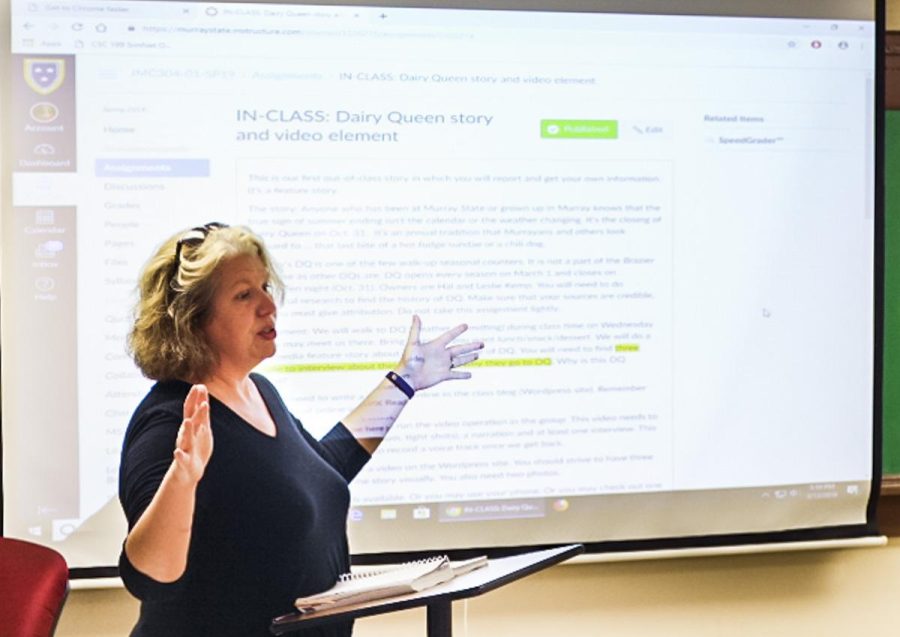Story by Haley Penrod
Staff Writer
hpenrod1@murraystate.edu
The Murray State ADVANCE team conducted a workplace culture survey to assess the University’s recruitment and retention of women faculty.
The survey questions were based on past ADVANCE climate surveys from other institutions and were implemented through the Cornell Survey Research Institute online. Their responses were analyzed and the results were reported to the advisory boards.
The survey was funded through a grant from the National Science Foundation and was sent to all 519 full-time faculty.
The results showed an underrepresentation of women in STEM at Murray State.
“The feedback is that people were not entirely surprised by the results that there were issues that needed to be addressed,” Maeve McCarthy, director of Murray State ADVANCE and professor of mathematics, said. “Some of these issues were not just about women faculty in STEM, but women faculty at Murray State.”
McCarthy said this is the case in all STEM fields.
“Women in STEM are underrepresented in their fields in general,” McCarthy said. “So, there are fewer women in STEM proportionally than men in STEM. This is true in all ranks but not in all departments.”
The survey was conducted to receive different faculty experiences and perspectives.
“For example, in Jesse D. Jones College of Science, Engineering, and Technology, there are approximately 22 percent women amongst the faculty, but psychology is a STEM field and their department is approximately 50 percent women,” McCarthy said
Faculty were not surprised, but they were interested in the results.
“The response has been encouraging, in that people are interested in the results, but somewhat disheartening that people were not very surprised by the results,” McCarthy said.
Paula Waddill, chair of the department of psychology and the lead social scientist on the study, said we can learn Murray State’s strengths and areas of challenge from the survey results.
“The survey provides valuable information on faculty perceptions and experiences of their workplace environment,” Waddill said.
The survey provided information from faculty across all departments, including men and women.
The responses not only helped them assess work conditions in STEM, but also in non-STEM departments. This gave a more accurate pictures of their strengths and challenges.
The Murray State ADVANCE team has made suggestions to the University to increase the representation of women in STEM.
These suggestions include improving the perception of work and life balance, providing child care, institutionalizing mentoring circles in the Faculty Development Center, assessing workload expectations and increasing salaries.
“We work with that advisory board to try to develop strategies to address the concerns that were raised in the survey,” McCarthy said.
The Murray State ADVANCE team is making another grant proposal to the National Science Foundation.
“One of the things we are doing at the moment is that we are developing the next grant proposal that will go into the National Science Foundation in May, and we are looking at different things we could do in the future to institutionalize improvements to the status of women faculty in STEM,” McCarthy said.
The survey response rate was 72 percent, 373 of the 519 faculty members.
“On behalf of the ADVANCE team, I’d like to thank faculty for taking the time to thoughtfully respond to the survey,” Waddill said. “It is important to recognize that while the survey results indicate areas of challenge for the University to address, the results also indicate perceived areas of strength on which the University can build.”




























































































